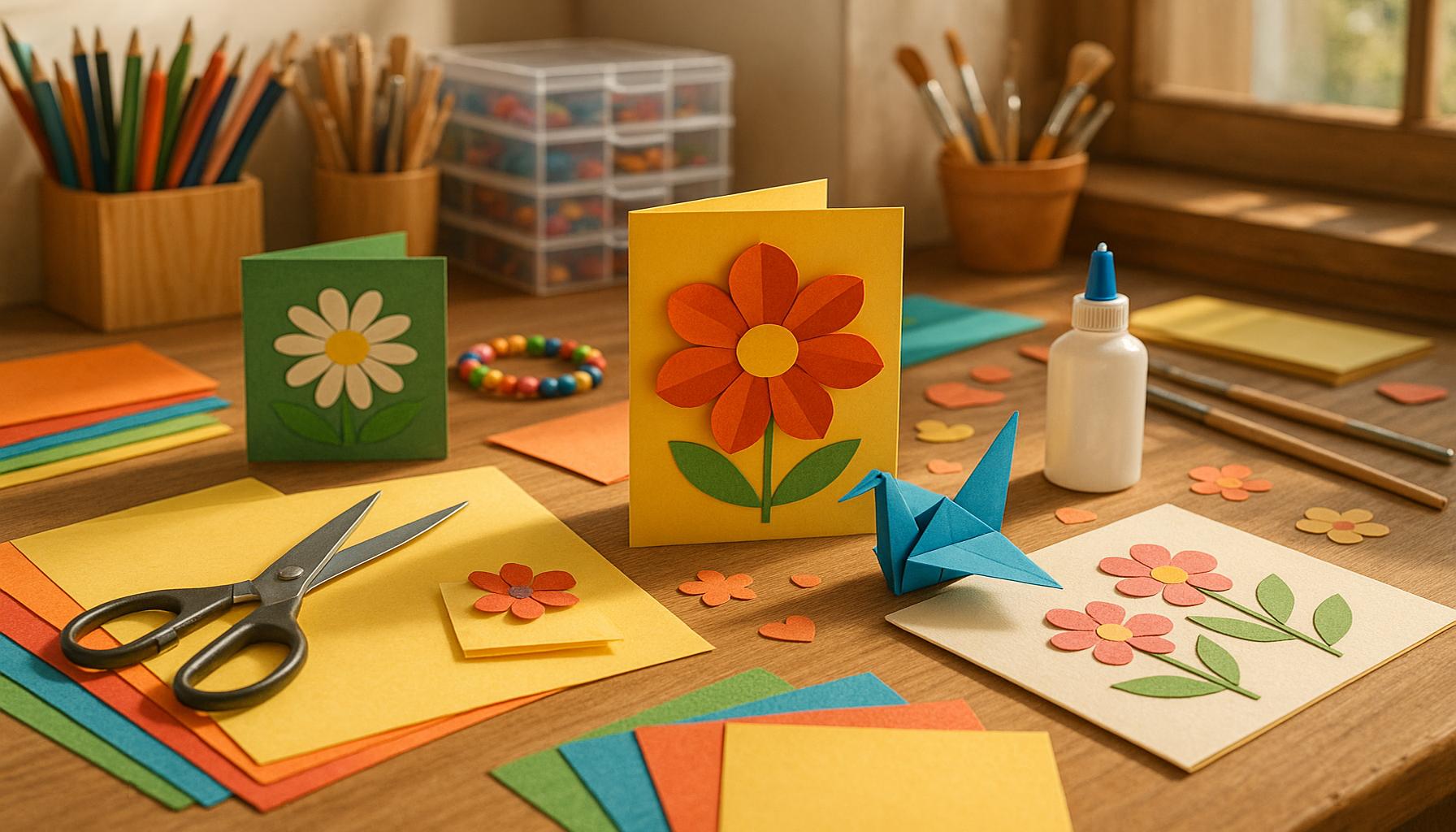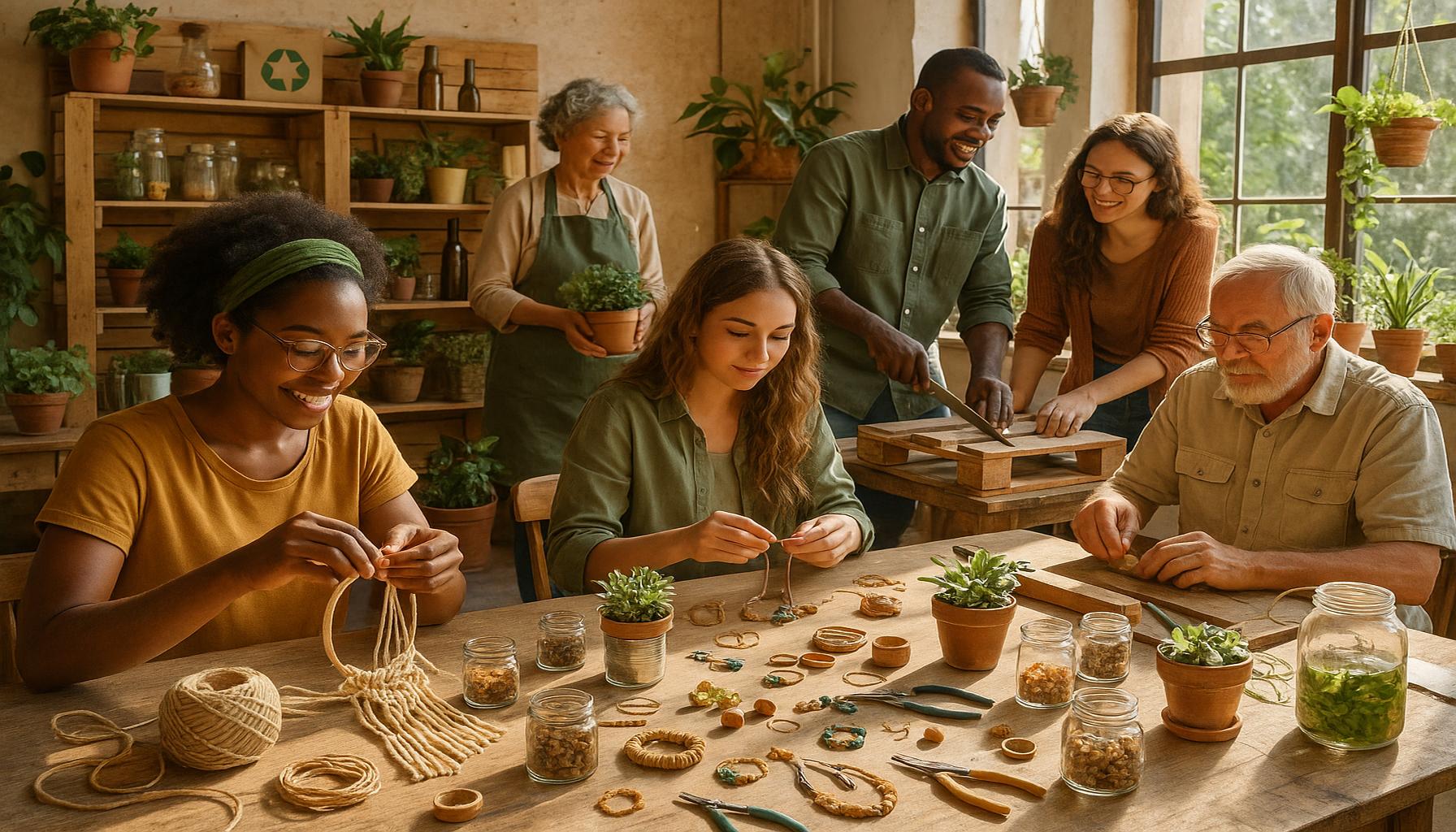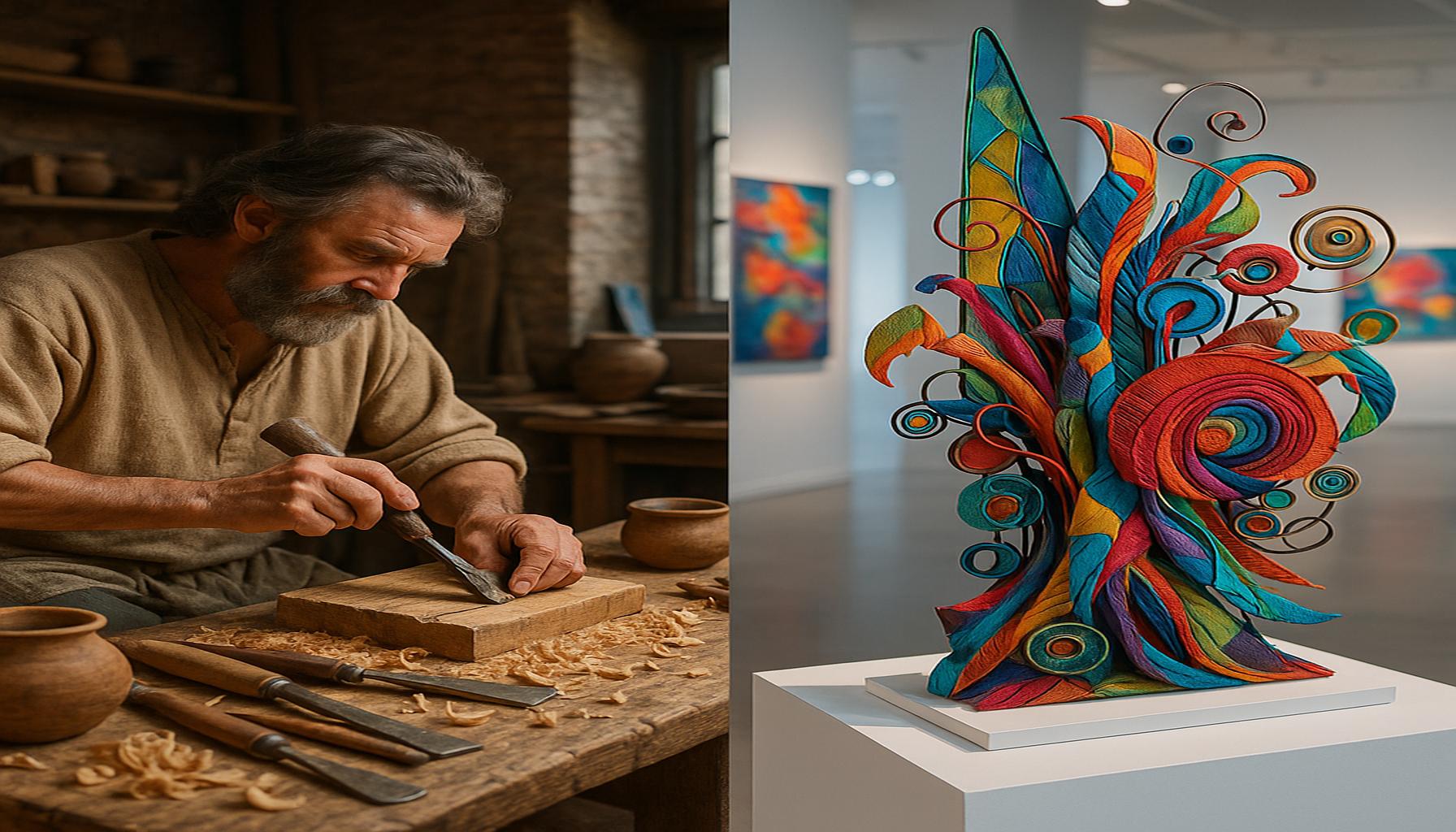How Crafting Can Stimulate Creativity in Children: Fun Projects to Do Together as a Family
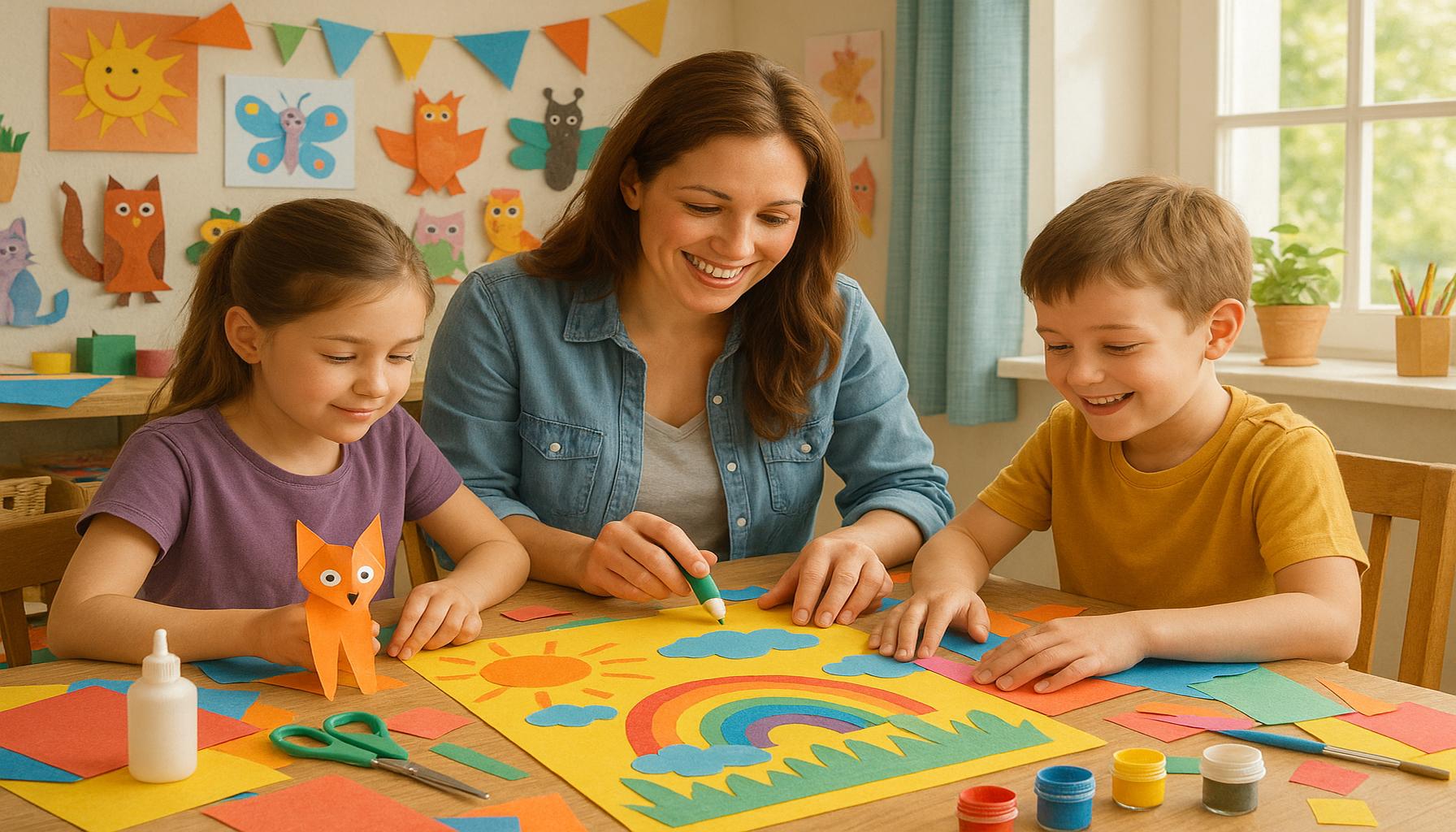
Crafting serves as a vibrant avenue for children to express their imagination, enabling them to engage in meaningful, hands-on activities that foster growth on multiple levels. This creative process not only allows children to manipulate materials and colors but also promotes cognitive development and social skills. Families who craft together reap the advantages of deeper connections and strengthened communication, making it an enriching experience for all involved.
Why Crafting Matters
Engaging in crafting stimulates various developmental areas, leading to important growth milestones in children. According to recent studies, children who participate in crafting exhibit:
- Improved fine motor skills: Activities like cutting, gluing, and painting enhance coordination and dexterity, laying the foundation for skills they will use later in writing and typing.
- Higher self-esteem: Completing a craft project provides a sense of accomplishment and pride. Children receive positive reinforcement from their families, which can boost their confidence in their abilities.
- Increased concentration: Focusing on a craft requires attention to detail and persistence. This heightened focus can translate into improved concentration in academic settings as well.
These benefits often extend beyond the craft table, influencing children’s academic performance and social interactions. Crafting encourages children to think critically, make decisions, and solve problems—skills that are vital throughout their education and beyond.
Fun Project Ideas
Crafting projects can be tailored to suit different age groups, allowing families to create together while learning new skills. Here are some engaging ideas to kickstart your crafting journey:
- Homemade greeting cards: Using colorful paper, markers, and stickers, children can design unique cards for family members and friends. This project encourages not only creativity but also the expression of feelings and sentiments.
- DIY bird feeders: Crafting simple bird feeders from everyday materials can spark children’s interest in nature and wildlife. Hanging them in the backyard provides opportunities for observation and learning about local bird species.
- Scrapbooking: Preserving family memories through scrapbooking encourages creativity, storytelling, and organization. Children can customize pages with photos, drawings, and captions that reflect their unique family history.
Exploring these activities invites laughter and imagination into your home, transforming family time into a rich, creative experience. Crafting can also serve as a conversation starter, allowing family members to share stories and ideas while working together on projects. By nurturing their creative instincts, parents can help their children build a toolkit of skills that will serve them well into adulthood.
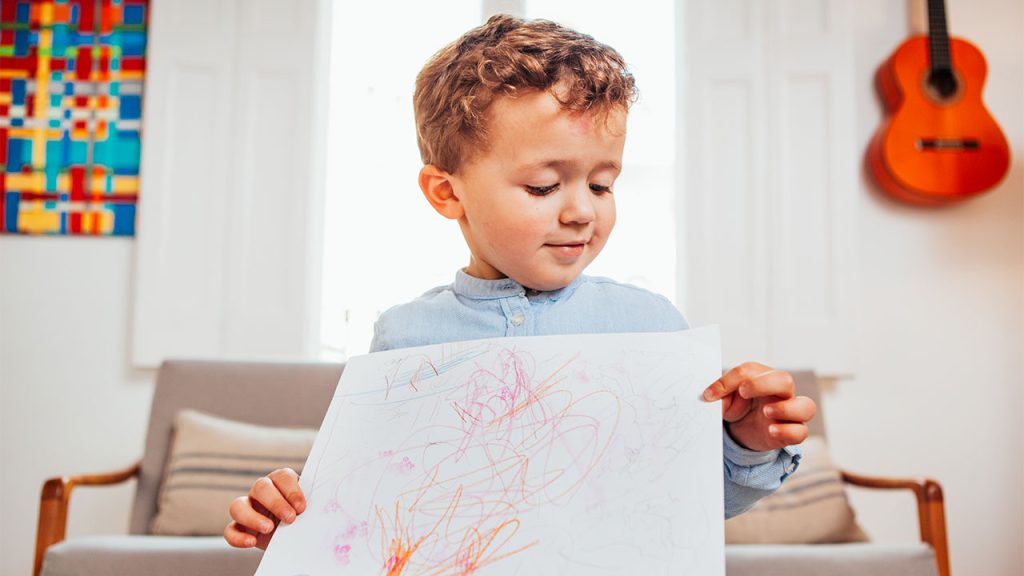
DISCOVER MORE: Click here to learn about the healing power of daily writing
The Impact of Crafting on Child Development
Crafting offers more than just an enjoyable pastime; it serves as a vital instrument in child development, enhancing both cognitive and emotional growth. Engaging in hands-on activities encourages children to explore their creative potential while fostering essential life skills. For instance, the act of creating with their hands allows young ones to practice critical thinking and make choices that contribute to their unique artistic expressions. Moreover, when children embark on crafting projects, they cultivate a sense of independence and responsibility as they navigate each task from start to finish.
The psychological benefits of crafting are equally significant. Child development experts report that creative activities can contribute to emotional regulation and a decrease in anxiety. Fostering an environment where children can express themselves freely allows them to develop a healthier sense of self. Through crafting, children learn to handle both failures and successes, which builds resilience—an essential quality for facing various challenges in life.
Engaging Ideas for Family Craft Sessions
To harness the potential of crafting, families can explore an array of projects that cater to different age groups and interests. Here are some fun and engaging project ideas that promote collaboration while stimulating creativity:
- Painted Rocks: This simple yet delightful project involves collecting smooth stones and adorning them with vibrant colors and designs. Children can create a garden path filled with personalized messages or animals, promoting both creativity and outdoor play.
- Recycled Art: Using materials like cardboard boxes, plastic bottles, and old magazines, families can work together to construct sculptures or new items. This project teaches children about sustainability and resourcefulness while igniting their imagination.
- Friendship Bracelets: By weaving colorful threads, children can craft bracelets to share with friends and family. This activity encourages fine motor skills and social bonding as children create gifts that express their care for others.
Such projects not only encourage initiative but also help strengthen family bonds. The collaborative nature of crafting establishes a platform for storytelling and shared experiences, allowing family members to connect in meaningful ways. As they engage in these activities, parents can guide their children in exploring colors, shapes, and materials, fostering an environment rich in creative exploration.
Ultimately, the time spent crafting leads to joyous memories, laughter, and an acknowledgment of each child’s individuality. It is within this creative space that families not only discover the benefits of crafting but also the beauty of collaboration and imagination.
Exploring the Benefits of Crafting for Children
Crafting offers more than just a leisure activity; it serves as a conduit for enhancing creativity in children. Engaging in various projects not only alleviates stress but also nurtures critical cognitive skills.
Hands-On Learning Improves Problem Solving
When children dive into crafting, they encounter challenges that require them to think critically and solve problems creatively. For instance, selecting materials for a sculpture or figuring out how to make paper maché structurally sound encourages children to explore different solutions, fostering their ability to approach challenges with a positive mindset. Such hands-on learning opportunities empower kids to use their imagination, turning abstract ideas into tangible realities, a skill that extends well beyond the crafting table.
Family Bonding Through Collaborative Projects
Working on crafts as a family creates a unique bonding experience. Projects like building a birdhouse or decorating picture frames provide an avenue for communication, cooperation, and shared goals. These activities allow family members to express appreciation for each other’s ideas, teaching children the value of collaboration. As they discuss artistic choices and collectively tackle challenges, they develop social skills that are crucial in everyday interactions.
Encouraging Expression and Emotional Development
Creativity isn’t merely about aesthetics; it’s intertwined with emotional expression. Crafting allows children to express feelings they might not be able to put into words. A simple watercolor painting could serve as a medium to convey happiness, sadness, or any emotion in between. Through these creative outlets, children can process their feelings in a safe environment, making crafting an excellent tool for emotional development.
Table of Benefits
| Category 1 | Category 2 |
|---|---|
| Cognitive Development | Crafting enhances critical thinking and problem-solving skills through creative challenges. |
| Family Collaboration | Working on projects together strengthens family ties and enhances communication skills. |
The world of crafting is a vibrant one that offers children the chance to grow both creatively and emotionally. It’s not just about making art but rather the invaluable life lessons learned along the way. As families embark on these fun projects, they’re investing in more than just a hobby; they’re securing foundational skills and memories that will last a lifetime.
DIVE DEEPER: Click here to uncover the impact of music on mental health
Exploring Diverse Crafting Techniques
As families dive deeper into the world of crafting, exploring a variety of techniques can significantly enhance the creative experience for children. Different crafting methods not only offer aesthetic diversity but also invite children to experiment and refine their skills. Here are a few popular techniques that families can try together:
- Collage Making: This technique utilizes magazines, newspapers, fabric, and other materials to create unique compositions. Children can express their thoughts and emotions visually, creating everything from dream boards to thematic art pieces that tell a story. This project fosters decision-making skills as children choose specific images and layouts, teaching them the fundamental concepts of design.
- Seasonal Crafts: With craft projects tied to seasons or holidays, families can celebrate various occasions while creating tangible memories. For instance, making homemade decorations for Thanksgiving or crafting nature-inspired ornaments for Christmas not only allows children to hone their skills but also helps instill a sense of tradition and family values.
- DIY Greeting Cards: Encouraging children to design personalized greeting cards for friends and family can enhance their emotional intelligence. It teaches empathy as they consider what would bring joy to others. Children can use different materials like colored paper, stamps, and stickers to bring their designs to life, reinforcing that creativity can be shared and appreciated.
Introducing these diverse techniques into family crafting time can lead to an enriching experience where children not only learn but also develop a broader understanding of art forms. It is essential for parents to encourage their children’s unique expressions and not impose strict guidelines on what the final product should look like. This interplay of freedom and guidance nurtures innovation and fosters a platform for self-discovery.
The Role of Crafting in Enhancing Learning
Beyond fostering creativity, crafting can serve as a wonderful educational tool. Research indicates that hands-on crafting activities can enhance cognitive skills such as problem-solving and spatial awareness. For instance, while building a birdhouse, children must consider measurement, design, and functionality, thereby engaging in real-world problem-solving.
Moreover, projects can be seamlessly integrated into educational themes. For example, integrating history through crafting—like creating a timeline or a diorama of a historical event—offers children a multisensory approach to learning. This creative fusion enriches their knowledge retention and understanding of complex concepts, making learning both enjoyable and effective.
In addition to cognitive growth, engaging in craft projects also significantly impacts children’s physical development. Activities like cutting, gluing, and assembling help improve fine motor skills and hand-eye coordination, which are vital as they progress in their educational journey. As children grow more proficient in these areas, they gain confidence in their abilities, further enhancing their willingness to explore new projects.
Ultimately, embracing various crafting techniques and their educational benefits allows families to come together in a nurturing environment, where children feel empowered to express themselves fully. By participating in crafting activities, not only do parents create lifelong memories with their children, but they also weave creativity into the fabric of their family culture. This blend of learning, bonding, and expression solidifies crafting as a cornerstone of familial engagement and child development.
DIVE DEEPER: Click here to transform your space
The Importance of Crafting in Family Life
Crafting serves as an imaginative outlet for families, allowing even the simplest of materials to become tools for creativity. Engaging in diverse crafting projects, such as making homemade ornaments during the holiday season or creating personalized T-shirts for family reunions, not only encourages teamwork but also instills valuable life skills in children. For instance, while working on a scrapbook, children learn to organize their thoughts, sequence events, and express emotions through visual storytelling—skills that are transferable to academic settings.
Moreover, the act of creating together enhances communication and collaboration among family members. Children learn from observing their parents and siblings, picking up techniques and problem-solving strategies in real-time. For example, if a child struggles to glue their craft supplies effectively, they might observe an adult’s careful technique and replicate it, thereby developing fine motor skills in the process. This hands-on experience is invaluable as it leads to cognitive development, including improved concentration and the ability to follow multi-step instructions.
Building Family Traditions Through Crafting
Integrating seasonal projects or educational themes can transform crafting into cherished family traditions. Families might gather to make festive decorations for Halloween, Thanksgiving, and other holidays, thereby creating lasting memories and strengthening their cultural ties. These traditions not only create a sense of belonging but also teach children about the significance of the occasions they celebrate. For example, while making Thanksgiving table decorations, children can learn about the history and values associated with gratitude and family unity.
Furthermore, crafting can serve as a springboard for discussions about various topics. A project focusing on environmental awareness, such as creating art from recyclable materials, can ignite conversations about sustainability and the importance of caring for the planet. This aspect of crafting not only enhances creativity but also encourages critical thinking and social responsibility in children as they become more aware of global issues.
As families embark on these enriching crafting adventures, they are not merely creating artworks; they are also nurturing connections and lifestyles rich in creativity and expression. So, gather your materials, unleash your imagination, and let the joys of crafting pave the way for a bright, creatively enriched future for your children.
